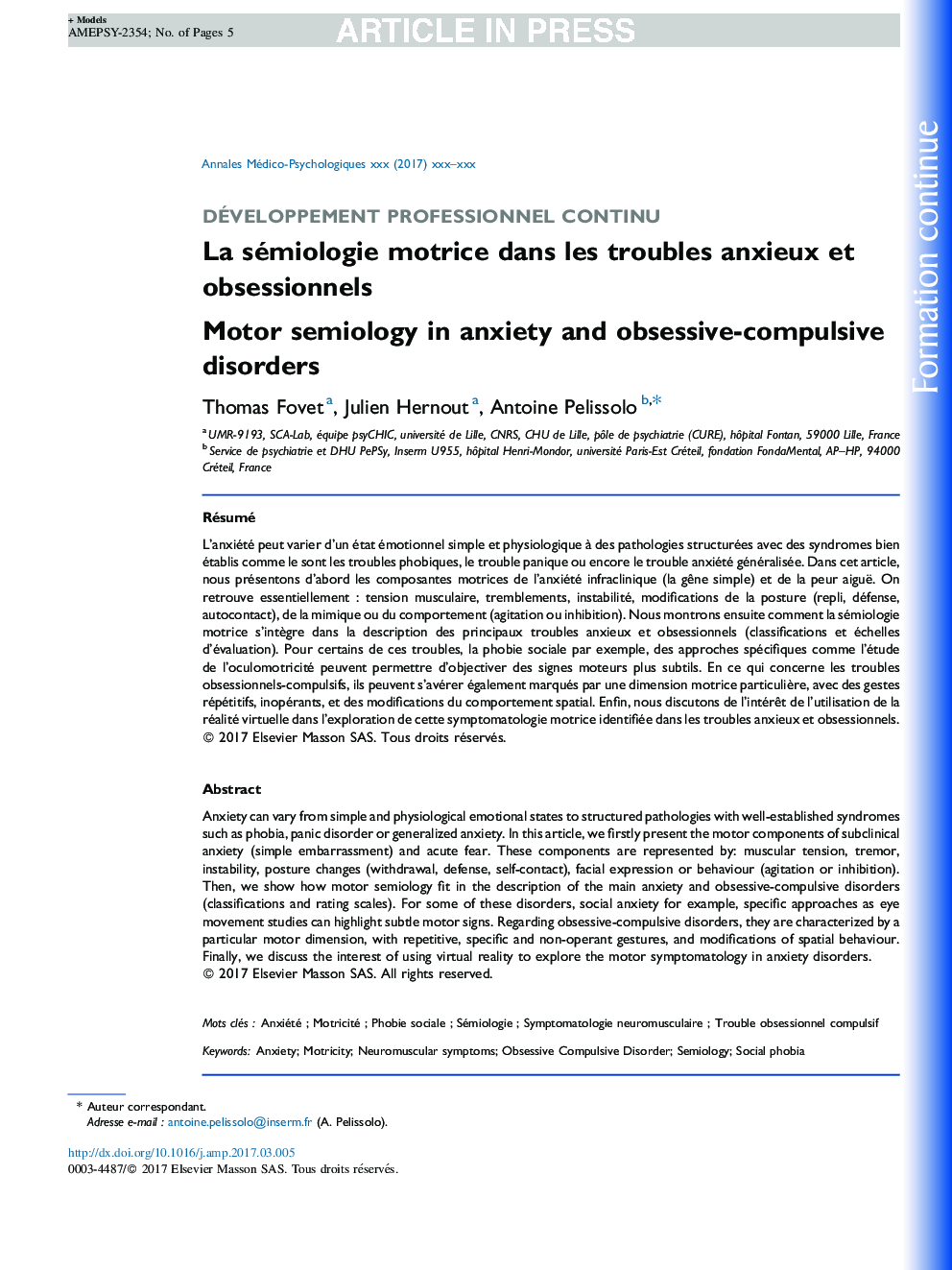| Article ID | Journal | Published Year | Pages | File Type |
|---|---|---|---|---|
| 6785882 | Annales Mdico-psychologiques, revue psychiatrique | 2017 | 5 Pages |
Abstract
Anxiety can vary from simple and physiological emotional states to structured pathologies with well-established syndromes such as phobia, panic disorder or generalized anxiety. In this article, we firstly present the motor components of subclinical anxiety (simple embarrassment) and acute fear. These components are represented by: muscular tension, tremor, instability, posture changes (withdrawal, defense, self-contact), facial expression or behaviour (agitation or inhibition). Then, we show how motor semiology fit in the description of the main anxiety and obsessive-compulsive disorders (classifications and rating scales). For some of these disorders, social anxiety for example, specific approaches as eye movement studies can highlight subtle motor signs. Regarding obsessive-compulsive disorders, they are characterized by a particular motor dimension, with repetitive, specific and non-operant gestures, and modifications of spatial behaviour. Finally, we discuss the interest of using virtual reality to explore the motor symptomatology in anxiety disorders.
Keywords
Related Topics
Health Sciences
Medicine and Dentistry
Psychiatry and Mental Health
Authors
Thomas Fovet, Julien Hernout, Antoine Pelissolo,
